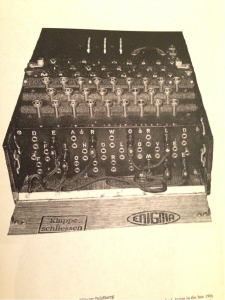What Is This ‘Trans’ in Transmedia?
Submitted by our 2016 ARC Fellow Team:
Clement Goldberg (Art Practice) and Abigail de Kosnik (Theatre, Dance and Performance Studies)
Note: Gail and Clement are co-authoring an essay called “What Is This ‘Trans’ in Transmedia.” They have two other graduate student collaborators on the project: Julia Havard, Ph.D. Student in Performance Studies, and Paige Johnson, Ph.D. Candidate in Performance Studies.
“What Is This ‘Trans’ in Transmedia?” investigates two recent media trends that are occurring simultaneously. The first is a surge in “transmedia” – which refers to studios’ and networks’ franchise-building properties across multiple platforms (so that a text that originates as a comic book is transformed into movies, video games, toys, television programs, etc.), and also the proliferation of fan productions that rework or revise mass media texts online in many genres (fans create fictional stories, art, videos, costumes, .gifs, etc. in response to the media texts they consume). The second is the “trans tipping point” in U.S. culture, a phrase used by mainstream news outlets to describe a dramatic increase in trans people’s visibility, especially in popular media, from 2014 to the present.
This essay brings these two “trans” phenomena into conversation with one another. One of our objects of investigation is the relationship between “trans” and “media.” Our research into this question has unearthed three theoretical moments when these terms come into close contact. Paul Preciado argues that radical questionings of human embodiment, especially regarding gender and sex definitions, occurred between 1860 and 1910: the concept of the hormone was invented and developed at the same time that mass media (telegraph, telephone, radio) was invented, and hormone theory is, in effect, a theory of information signaling.
Jack Halberstam argues that the moment of the birth of computing and artificial intelligence (roughly 1940-1950) must be understood in the context of Alan Turing (one of the primary inventors of the computer) being legally persecuted for his homosexuality, and forced to undergo chemical castration (estrogen treatment), which factored into Turing’s committing suicide in 1954. Halberstam argues that these coincident events call for society and culture to move beyond the binary of both machine/human and male/female. Halberstam claims that if a machine is to be defined as “intelligent,” it must have the capacity to desire, and desire, in both the machine and the human “remains an interference running across a technologic.”
Feminist film theorist Mary Ann Doane argued in 1982 that the “male gaze” of mainstream Hollywood cinema renders the female spectator into a “transvestite,” as she must occupy the gender identification of a male spectator as an audience member.
This set of theories lead us to conclude that “trans” and “media” must be thought together, and are imbricated rather than separated. Therefore, we assert that when we observe the upswing in representations of trans people, in mainstream, fan-produced, and independent media, we must bear in mind that “trans” media is not new, but that trans and media have a deep interconnectedness and shared lineage, and that this the current moment is the tipping point for both.
Abigail De Kosnik is an Associate Professor in the Berkeley Center for New Media and in the Department of Theater, Dance & Performance Studies. Her research focuses on how performance studies, gender studies, critical race theory, and transnational studies intersect with digital popular culture and social media.
Clement Hil Goldberg is an interdisciplinary artist working in experimental film, sculpture and animation, and a MFA student in the Art Practice department at UC Berkeley. Their current project Our Future Ends connects near extinct lemur primates to an imagined queer prehistory set in the occult land of Lemuria. clementhilgoldberg.com
Note: Over the course of the spring semester, each 2016 ARC Fellows team will submit a short blog post about their project and findings. We hope you will enjoy these short readings! The Fellows Program advances interdisciplinary research in the arts at UC Berkeley by supporting self-nominated pairs of graduate students and faculty members as they pursue semester-long collaborative projects of their own design. To learn more about the program, click here.

